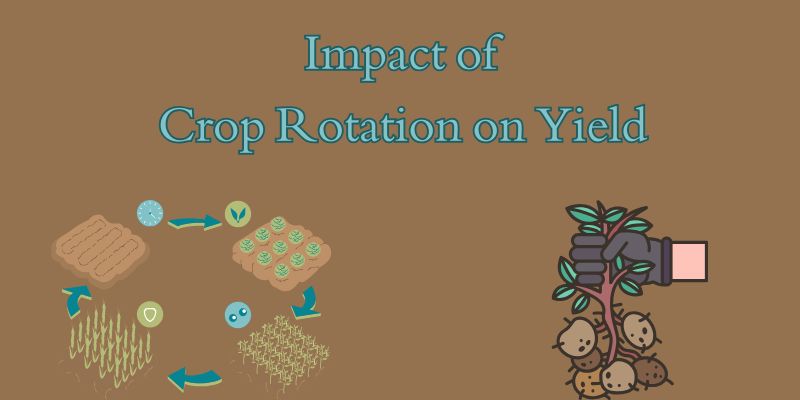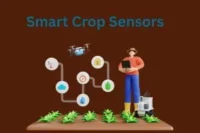Impact of Crop Rotation on Yield: Cultivating Healthier Soils and Stronger Harvests
Published: 2 May 2025

Crop rotation is one of the most effective and scientifically supported practices for improving soil health and boosting crop yields. According to long-term studies by the USDA and various agronomic institutions, rotating crops—such as alternating corn with legumes—can increase yields by 10–25%, enhance soil nutrient balance, and significantly reduce pest and disease pressure. By breaking the cycle of continuous monoculture, crop rotation restores biological diversity in the soil, reduces input dependence, and promotes more resilient, productive farmland.
So, guys, without wasting time, let’s jump into the article to learn Impact of Crop Rotation on Yield: Cultivating Healthier Soils and Stronger Harvests
What is Crop Rotation?
- Crop rotation is the practice of growing different types of crops on the same field in a sequential order across seasons or years.
- Helps manage soil nutrients, break pest and disease cycles, and improve crop yield over time.
- Example rotation: corn → legumes → small grains → root crops
Emotional and Practical Significance
- Farmers feel more connected to their land by working with natural cycles, not against them.
- In times of crop failure or market uncertainty, rotation systems provide economic and emotional stability.
- Stories from farmers around the world show that soil health equals hope.
Key Benefits of Crop Rotation on Yield
1. Improved Soil Fertility
- Legumes fix atmospheric nitrogen, enriching the soil naturally.
- Reduces dependency on synthetic fertilizers, saving costs and minimizing runoff.
- Enhances microbial activity and overall soil structure.
2. Higher Yields Over the Long Term
- Breaks yield plateaus common in monoculture systems.
- Reduces plant stress from continuous cropping of the same species.
- Promotes stronger root systems and more resilient plant development.
3. Reduced Pest and Disease Pressure
- Disrupts life cycles of crop-specific pests and soil-borne pathogens.
- Eliminates the “continuous host” effect that allows pests to thrive.
- Reduces need for chemical pesticides and supports integrated pest management (IPM).
4. Better Weed Management
- Rotating crops with different growth habits and canopy structures suppresses weed growth.
- Competitive crops like rye or sorghum outcompete weeds naturally.
- Less chemical herbicide use, leading to healthier ecosystems.
5. Moisture Efficiency and Soil Structure
- Deep-rooted crops (e.g., alfalfa) improve water infiltration and reduce erosion.
- Alternating shallow and deep root systems maintains soil porosity.
- Enhances drought resilience and reduces irrigation needs over time.
6. Economic Stability
- Diversifies production, reducing market risks.
- Opens access to multiple markets instead of relying on one cash crop.
- Reduces production costs over time through lower input requirements.
Scientific Evidence Supporting Crop Rotation
- USDA 10-Year Study: Rotating corn with soybeans increased corn yields by up to 15% compared to continuous corn planting.
- Agronomy Journal (2019): Showed significant soil organic matter increases and reduced fertilizer needs in legume-based rotations.
- International Maize and Wheat Improvement Center (CIMMYT): Rotation with pulses improved wheat yield by 20–50% in South Asia.
Challenges in Adopting Crop Rotation
1. Knowledge Gaps
- Farmers may lack access to region-specific crop rotation plans.
- Requires training and long-term thinking.
2. Market Access Issues
- Some rotated crops (like pulses or millets) have limited buyers in monoculture-driven markets.
- Infrastructure may not support storage and sale of diverse crops.
3. Short-Term Profit Focus
- Rotation may seem less profitable in the short run, especially during the adjustment period.
- Benefits accumulate over time, not instantly.
4. Policy and Support Gaps
- Lack of incentives for diversified cropping systems in some regions.
- Financial systems often favor high-yield monoculture cash crops.
Solutions and Practical Steps
- Start Small: Introduce a second crop into your existing cycle—e.g., soybeans after corn.
- Use Cover Crops: Plant clover, mustard, or radish during off-seasons to replenish nutrients and suppress weeds.
- Seek Local Guidance: Work with agricultural extension agents or co-ops for tailored advice.
- Invest in Storage and Diversification: Build capacity to store and sell various crops to different markets.
- Advocate for Support: Push for government programs that reward crop diversity and sustainable farming.
Cultural and Generational Wisdom
- Indigenous and ancestral farming systems practiced crop rotation instinctively.
- It wasn’t just science—it was spiritual stewardship of the land.
- Returning to crop rotation means honoring the land and the people who nurtured it for generations.
References
According to research published in Agronomy Journal (2019), rotating crops improves soil organic matter and nutrient cycling, significantly enhancing long-term soil productivity.
Author Name.
B.C.Ball, I.Bingham
The role of crop rotations in determining soil structure and crop growth conditions
Journal Article

- Be Respectful
- Stay Relevant
- Stay Positive
- True Feedback
- Encourage Discussion
- Avoid Spamming
- No Fake News
- Don't Copy-Paste
- No Personal Attacks

- Be Respectful
- Stay Relevant
- Stay Positive
- True Feedback
- Encourage Discussion
- Avoid Spamming
- No Fake News
- Don't Copy-Paste
- No Personal Attacks





